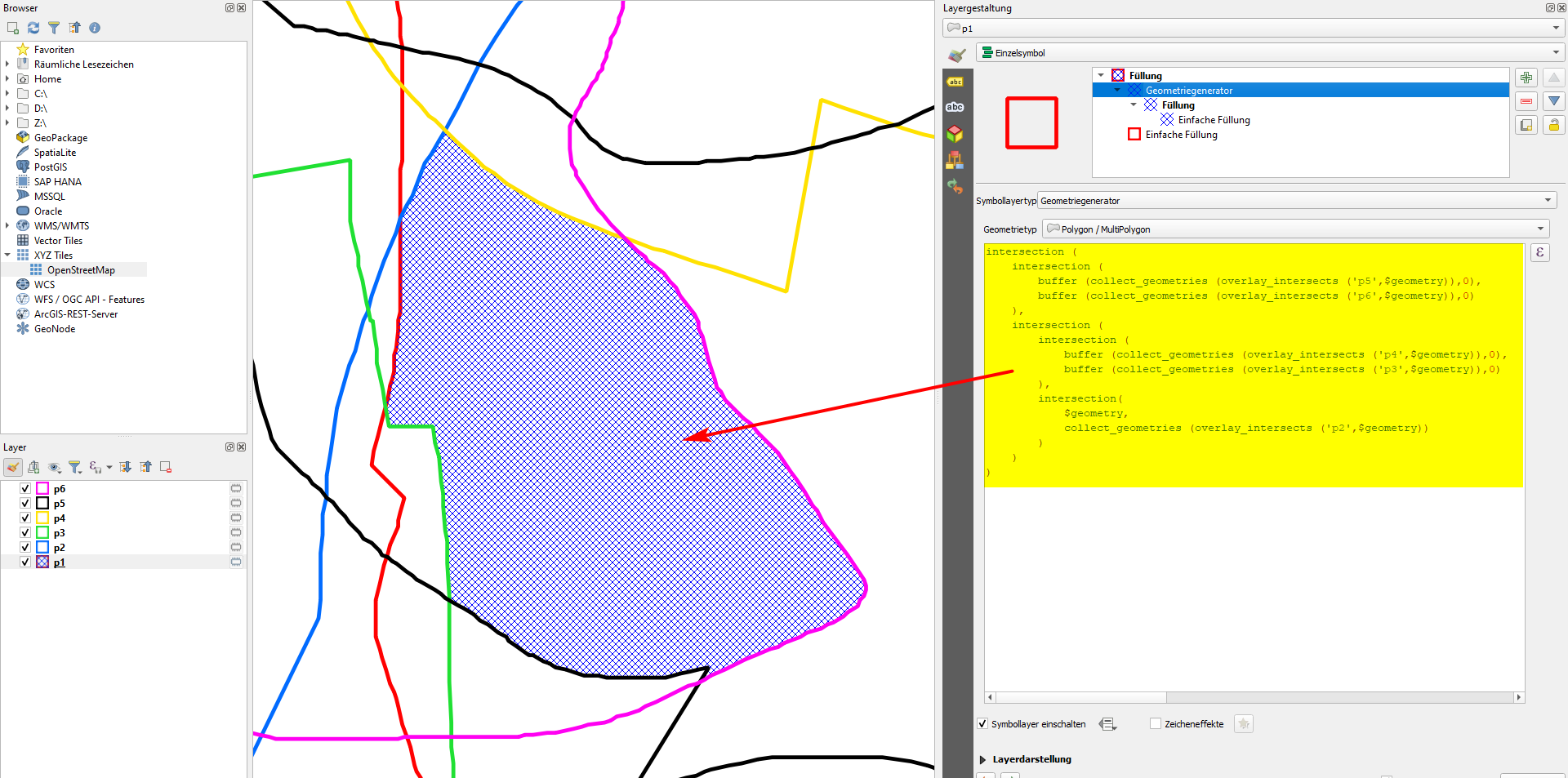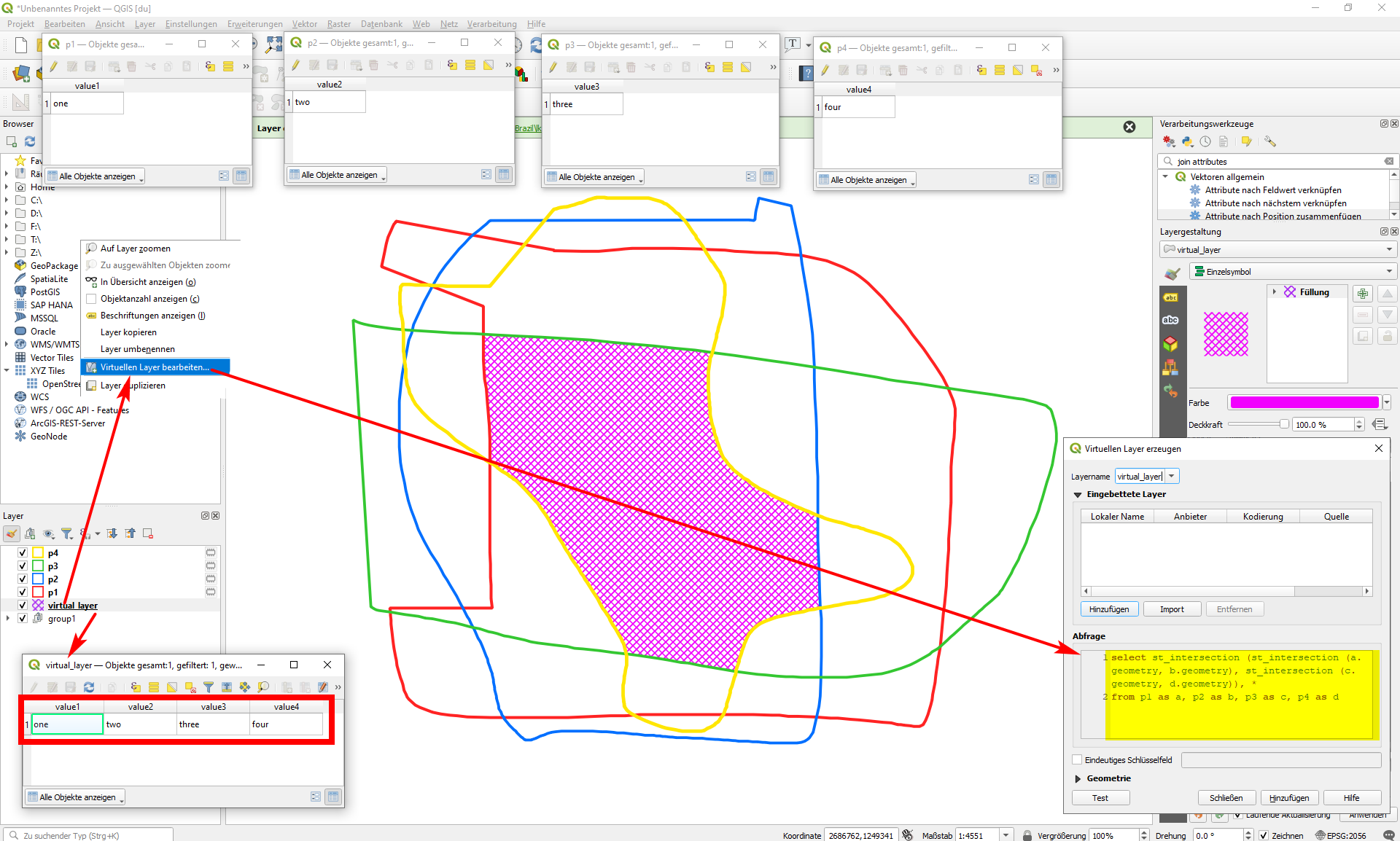Short answer: the principles
You can use QGIS expressions to generate custom overlay like intersection of as many layer as you want. Use Geometry generator or Geoemtry by expression (see here for differences).
How to do it
Let's say you have 5 polygon layers, name p1 to p5. Say you look for the areas where all five intersect. Split up this task in several steps. This is because the expression intersect() only takes two arguments (input layers), so you have to create a "nested" (combined) statement, say like (pseudocode):
intersect the (interesction of A and B) with the (interesction of C and D)
Or more detailed:
- Intersection of p2 with p3 (lines 4-7 in the expression below)
- Intersection of p4 with p5 (lines 8-11)
- Intersect the result of steps 1 and 2 (you get: intersection of layers p2, p3, p4 and p5)
- Intersect p1 with the result of step 3.
The expression to use
The expression looks like this (see below at the bottom for detailed explanation of the functions used):
intersection (
$geometry,
intersection (
intersection (
buffer (collect_geometries(overlay_intersects('p2', $geometry)),0),
buffer (collect_geometries (overlay_intersects( 'p3', $geometry)),0)
),
intersection (
buffer (collect_geometries(overlay_intersects('p4', $geometry)),0),
buffer (collect_geometries (overlay_intersects( 'p5', $geometry)),0)
)
)
)
Screenshot: the expression with Geometry generator: the diagonal X hached area is created with the expression above - the area where all 5 layers intersect:

Variant: how to adapt the expression to changing number of layers
For an even number of intersecting polygons, adapt the expression as follows (here: 6 polygons p1 to p6). As you see, I added a buffer([geometry],0) statement. Sometimes, without this, the expression returns NULL.
intersection (
intersection (
buffer (collect_geometries (overlay_intersects ('p5',$geometry)),0),
buffer (collect_geometries (overlay_intersects ('p6',$geometry)),0)
),
intersection (
intersection (
buffer (collect_geometries (overlay_intersects ('p4',$geometry)),0),
buffer (collect_geometries (overlay_intersects ('p3',$geometry)),0)
),
intersection(
$geometry,
collect_geometries (overlay_intersects ('p2',$geometry))
)
)
)
Screenshot: the diagonal X hached area, representing the common space of all 6 polygons, is bordered by all 6 polgons as you can see from the color of the outer boundaries: red, blue, green, yellow, black and pink:

Explanation: How this expression works
- The intersection is done using the
intersection() function, this only takes two arguments: intersection(geometry1, geometry2).
- So we have to combine intermediate steps with nested (combined)
intersection functions. Geometry generator as well as Geoemtry by expression are always based on a specific layer, so to get the geometries of the other layers to combine (intersect) them, we use the overlay_intersect() function.
- This returns an array of all geometries, so to get geometries, we must convert from array to geometries using
collect_geometries().
- To work properly, we must buffer these geometries by 0, using
buffer() function. For the very layer we work on, it's enough to get the geometries with $geometry.



